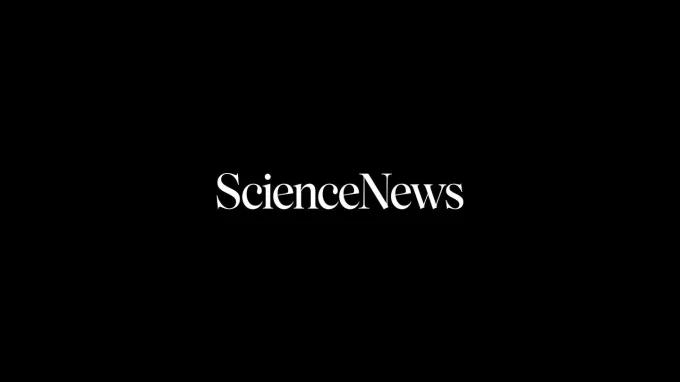Science News Magazine: Current Issue
Vol. 179 No. #8
Trustworthy journalism comes at a price.
Scientists and journalists share a core belief in questioning, observing and verifying to reach the truth. Science News reports on crucial research and discovery across science disciplines. We need your financial support to make it happen – every contribution makes a difference.
More Stories from the April 9, 2011 issue
-
 Health & Medicine
Health & Medicine‘Diabetes Belt’ outlined
The Deep South and Appalachia show a high prevalence linked to obesity, poor educational achievement and a sedentary lifestyle, a study shows.
By Nathan Seppa -
 Space
SpaceThe best next space missions
The National Research Council issues recommendations for planetary science projects that NASA and NSF should fund starting in 2013.
By Ron Cowen -
 Humans
HumansMissing bits of DNA may define humans
Genetic information lost along the way may have led to bigger brains and spineless penises, among other traits.
-
 Life
LifeLife
Chimps are righties and orangutans lefties, plus singing mice and chilly dinosaurs in this week's news.
By Science News -
 Humans
HumansIn-laws transformed early human society
A study of today's hunter-gatherers finds marital relationships help spread a social fabric.
By Bruce Bower -
 Earth
EarthHow continents do the splits
East African seismic study reveals how land gives way to ocean crust.
-
 Paleontology
PaleontologyNew dinosaur species is titanic
Titanoceratops may be the oldest known member of the triceratops group.
By Susan Milius -

Humans
The psychological toll of miscarriage can linger for years, plus bilingual timelines and twisted morality in this week’s news.
By Science News -
 Life
LifeAntibiotics may make fighting flu harder
The drugs kill helpful bacteria that keep the immune system primed against viral infections.
-
 Humans
HumansNew stars of science honored in D.C.
The 2011 Intel Science Talent Search awards prizes to 10 young researchers.
-
 Life
LifeDon’t trust any elephant under 60
Herds with older leaders are more attuned to danger, a study finds.
By Susan Milius -
 Earth
EarthJapan quake location a surprise
Based on regional tectonics, seismologists expected the biggest events in the island's southern half.
By Devin Powell -
 Astronomy
AstronomyNew study gives dark energy a boost
Measurements provide further evidence for a cosmic push that is accelerating the expansion of the universe.
By Ron Cowen -
 Humans
HumansRecord ozone thinning looms in Arctic
Depletion could expose the northern midlatitudes to higher-than-normal ultraviolet radiation in coming weeks.
By Janet Raloff -
 Life
LifeComputer chips wired with nerve cells
Experiments could lead to ways of melding minds with machines.
-

Science Future for April 9, 2011
April 16 The American Museum of Natural History in New York City opens an exhibit exploring the world’s largest dinosaurs. Visit www.amnh.org April 22 Learn about the planet and its ecology at events around the country. Go to www.earthday.org April 28 Sample the science of chocolate at an evening of entertainment in Durham, N.C. See […]
By Science News -

The Crossley ID Guide: Eastern Birds by Richard Crossley
This illustrated field guide shows each bird in lifelike scenes using the author’s photos. Princeton Univ. Press, 2011, 529 p., $35.
By Science News -

Fast Car Physics by Chuck Edmondson
Fans of fast wheels and science alike will get a charge from this look at motor sports by a physicist and amateur race car driver. Johns Hopkins Univ. Press, 2011, 229 p., $29.95.
By Science News -

Loving + Hating Mathematics by Reuben Hersh and Vera John-Steiner
Tales of mathematicians’ engagement with their subject bring to life this examination of the human and cultural aspects of math. Princeton Univ. Press, 2011, 416 p., $29.95.
By Science News -

The Most Human Human by Brian Christian
The Turing test competition, an annual search for the most “human” computer, is the thread in this tour through the makings of human intelligence. Doubleday, 2011, 303 p., $27.95.
By Science News -

-

Book Review: Kraken: The Curious, Exciting, and Slightly Disturbing Science of Squid by Wendy Williams
Review by Daniel Strain.
By Science News -

Japan crisis may have little effect on U.S. energy policy
Whatever the ultimate repercussions of the Fukushima Daiichi nuclear plant accident in Japan (see Page 6), the crisis raises questions over the role nuclear power should play as an energy source. Michael Levi, head of the energy security and climate change program at the Council on Foreign Relations in New York City, spoke to reporters […]
By Michael Levi -

-

-

Big Fishing Yields Small Fish
Researchers map predator loss and predict unstable oceans.
By Janet Raloff -

Letters
Water at the start, and later “Liquid acquisition” (SN: 1/15/11, p. 26) discusses two new models about how Earth got its water. But the two models are not mutually exclusive. Indeed, I wonder if perhaps two (or more) sources of water may be the only way to match all of the observed isotopic abundances. Is […]
By Science News -

Science Past from the issue of April 8, 1961
REMAKE VENUS ‘WEATHER’ — Man can land on the mystery planet Venus after making its air suitable for humans. This job could be done by dropping primitive plants into the planet’s atmosphere, then waiting for results. The primitive algae would remove the carbon dioxide believed to poison the air on Venus for humans. The result […]
By Science News -

Craving Earth by Sera L. Young
Human biology and culture are interwoven in this exploration of pica, the craving to eat clay, dirt, starch and other nonfood substances. Columbia Univ. Press, 2011, 228 p., $29.50.
By Science News
